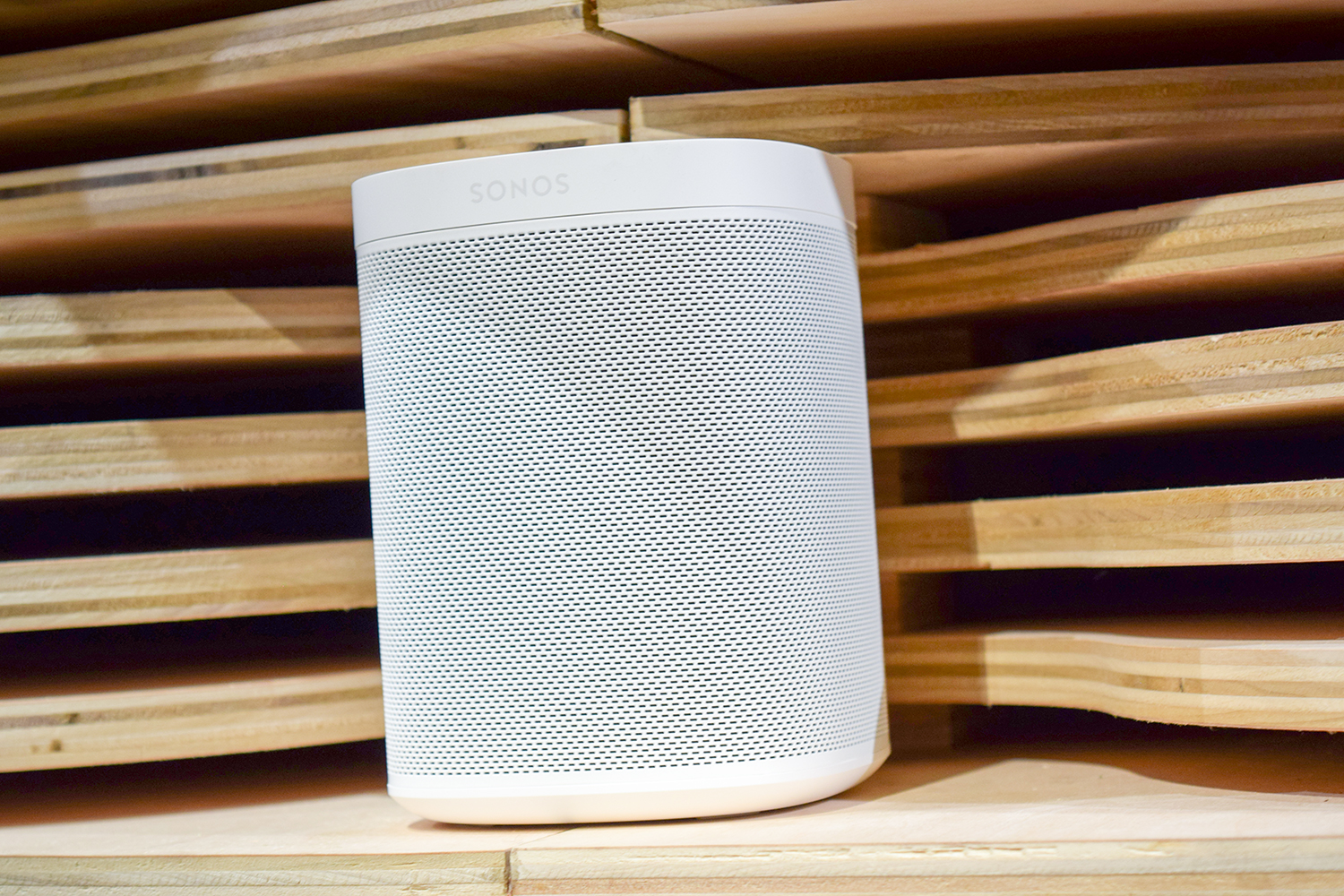
Sonos announced its all-new Sonos One smart speaker, the company’s first product with voice control, in early October — and it’s a doozy. Our Sonos One review described it as “the perfect smart speaker.” At launch, the Sonos One smart speaker integrates with Amazon’s digital assistant, Alexa, but the speaker is designed to support multiple voice-control platforms — in 2019, the Sonos One will be updated to support Google Assistant as well.
Not to be left out, existing Sonos speaker owners will be able to control their systems via Alexa through any of Amazon’s Echo speaker devices, thanks to a software update. Airplay 2 support is coming for iOS device owners, and for those who have longed to be able to control their Sonos speakers from individual music apps like they do with Spotify, Sonos revealed that in-app control would be coming to Pandora and Tidal later this year, with iHeart Radio soon to follow.
Sonos One
The new Sonos One speaker looks a whole lot like the company’s existing Play:1 speaker, but a closer look reveals a key difference: A six-microphone array installed at the top of the speaker. Under the hood is additional hardware that allows the speaker to accept and process voice commands. Everything else that makes a Sonos speaker sound like a Sonos speaker is still baked right in.
In demonstration videos Sonos showed at its New York City unveiling, it appeared to be unnecessary for users to address the speaker by saying Alexa’s name to wake it up. However, during the hands-on demos, Sonos reps made it explicitly clear that you will indeed have to call out Alexa in order to control your Sonos One.
During the hands-on demos, the Sonos One could be controlled by swiping on top of the device. Similar to the Playbase and Play:5, you can skip a track or play a previous track by swiping to the right and to the left, respectively. Unlike its predecessors, though, you can also control video playback from streaming services like YouTube when sound is routed to the Sonos One.
You can pre-order a Sonos One smart speaker here.
From trash to treasure
Sonos One’s six microphones are similar to the microelectromechanical systems (MEMS) microphones found in smartphones, and the company is pretty excited about the new system. In fact, Klaus Hartung, Sonos’ director of smart audio and voice, was so eager to test the new mics, he used one of the company’s discarded foam mock-ups to try them out. “I wanted to test something out, so someone fished it out of a garbage bin in Santa Barbara [California] and FedExed it over to me. We simply … drilled some holes in it and put microphones in it, and we put it in the anechoic chamber and we measured it,” Hartung told Digital Trends at the Sonos One unveiling. “Sometimes we call them Frankenstein units.”
Sonos has two anechoic chambers — one in Santa Barbara and one in Boston — which are “soundproof” rooms often employed by speaker designers in order to analyze components without acoustic interference. The company did extensive testing inside the chambers with the Sonos One to create an algorithm that allows the mics to suppress ambient noise and focus on the direct sound of a voice.
Now you can be the control freak
Previously, Sonos operated a closed, very tightly controlled system. It wanted its hardware and software to work seamlessly together, and always work perfectly for its customers. The company feels it has achieved that experience, but now Sonos is looking beyond its heavily fortified fortress and letting others in.
Sonos has opened up its platform and started working with developers from more than 100 different partners. While that might sound like inside baseball, it is the very same practice that has led Amazon’s Alexa to its rampant popularity today — Alexa is virtually everywhere now, and Sonos likely wants to enjoy the same sort of omnipresence.
By allowing other tech companies to integrate their software and hardware with Sonos products, Sonos itself will play a bigger role in smart home systems. Perhaps instead of a traditional doorbell, you hear a clip of your favorite song coming from a Sonos speaker anytime someone presses the button at the door, for instance.
With the integration of Amazon Alexa into Sonos products, the speaker company is entering what it calls the “sonic internet” — i.e., the internet of things with voice assistance. “We really will keep an open attitude with what’s the role of voice, how is it compelling, which products should have it, which products should not have it. Maybe, ultimately, all products have it,” Tad Toulis, vice president of design at Sonos, told Digital Trends.
While there was originally some consternation over the lack of Spotify support with the new Alexa integration (you previously had to start Spotify from the Sonos or Spotify app before using your voice to control volume, skip tracks, and the like), Sonos has been quick to remedy the situation. After initially promising an update for December that would allow you to tell Alexa to play your Spotify playlists, Sonos has beaten expectations and given users the ability to start Spotify using their voice.
More Apple integration
Airplay 2 is coming to Sonos speakers next year. This will allow Sonos speaker control from iOS devices and through any Siri interface. Potentially, this could mean Sonos speakers like the Sonos PlayBar and PlayBase could work wirelessly with the Apple TV 4K.

The Sonos One smart speaker is only the latest way Sonos is trying to make your listening experience smarter. The company recently unveiled its Wrensilva Sonos Edition Record Console, a turntable setup connected to two of Sonos’ Play:5 speakers. The console was designed based on the sleek style of Sonos’ NYC flagship store and looks like a piece of furniture from The Jetsons.
Update: Sonos One’s Alexa integration now allows you to start Spotify with your voice.








